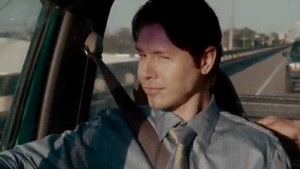The Big Easy Returns to the Small Screen
 This Sunday, David Simon’s Treme (HBO) returns to the air for its second season. This eleven episode set will pick up the story 14 months after Katrina as the city enters the second phase of its recovery. With questions of immediate survival now largely resolved, this second season seems likely to see the program move into a broader meditation on the ongoing process of recovery and the enduring effects of the humanitarian disaster in the wake of the flood.
This Sunday, David Simon’s Treme (HBO) returns to the air for its second season. This eleven episode set will pick up the story 14 months after Katrina as the city enters the second phase of its recovery. With questions of immediate survival now largely resolved, this second season seems likely to see the program move into a broader meditation on the ongoing process of recovery and the enduring effects of the humanitarian disaster in the wake of the flood.
With this in mind, Antenna is proud to debut a weekly column that intends to address various aspects of Treme as the new season unfolds. Given the range of topics and themes covered by the program, we feel that it is an ideal candidate for extended discussion on Treme. We have lined up a diverse group of media scholars to contribute their perspectives on the program over the course of the season. We encourage you to come back to this space each Wednesday for a fresh take on that week’s program and the broader series in general.
Where the first season saw the characters taking the first steps towards some sort of emotional, cultural and economic recovery, the second season promises to follow these characters into the second phase of the city’s gradual renewal. The cast will no longer have John Goodman, whose tortured writer Creighton Bernette committed suicide towards the end of the first season. In his place, Treme has added Jon Seda, who is set to portray Nelson Hidalgo, an opportunistic property developer from Texas. In the picture to the left, Seda is seen surveying his surroundings as he rolls into New Orleans.
It appears that this change may herald something of a shift in focus towards some of the structural socio-economic issues associated with New Orleans and the aftermath of Katrina. Treme‘s first season alluded to these concerns, but it often seemed to be most interested in the city’s cultural recovery and the emotional impact of the Katrina debacle on its residents. Film Quarterly’s J. M Tyree observes that, “Treme presents [New Orleans] as a fragile but living community of wonders, a sort of ongoing work of performance art which, like the city’s music, remains effervescent and improvisational yet brilliantly coherent.” Indeed, season one often seemed like a cultural argument for the importance of New Orleans to a forgetful American nation. The program reveled in the city’s music and food, meditated upon its treatment in the media, and considered various forms of tourism in relation to questions of cultural authenticity. Yet, there are were also points at which Simon and company darkened the corners of this picture with a bleak assessment of the socio-economic dynamics within New Orleans and the traumatized city’s relationship with the world beyond it. Season two may move further in this direction as it seems poised to use New Orleans Police Dept. Lt. Terry Colson (David Morse) to examine the resurgence in crime that accompanied the recovery. At the same time, Seda’s character might provide a means for Treme to reconcile its cultural side with a consideration of the forces at work in the rebuilding of the city’s infrastructure. In one of the trailers for the season, Seda’s character is seen discussing the rebuild with a well-dressed older man. The man opines, This is a unique opportunity to fix New Orleans. Crimes, schools, infrastructure. Enough people say, ‘why rebuild New Orleans at all?”. To this, Seda’s property developer says, “Never let a disaster go to waste’.
That line may seem rather obvious, but it cuts to the heart of the dynamic in post-Katrina New Orleans that George Lipsitz so forcefully describes in a 2006 essay. For Lipsitz, there are two opposing constituencies involved in the real-life drama. There are the wealthy people, corporations, politicians, corporate media outlets, and bourgeois tourists on the one hand and the urban residents, service industry workers, and local cultural custodians on the other. Lipsitz notes that, for the first group, “The black residents of the city who suffered so terribly are not people who have problems, but instead are the problem.” It seems that, now that Treme has shown its audience why New Orleans should matter to America, the program may now proceed to utilize its setting as a means to interrogate some of the socio-economic problems that plague American society. Perhaps, Katrina and its aftermath might serve as a point of rupture that, when re-imagined through fictional television, could facilitate a broader consideration of the structural inequities obscured by neoliberal policies and their attending discourses.
This is, however, merely a hopeful prognostication for we do not yet know what season two will bring. I do know that I am excited to see it unfold and hopeful that we might have a rich and rewarding discussion about Treme and the issues it raises here on Antenna. With this in mind, we encourage you to offer your thoughts about the program and your wishes for its second season in the comments below. We’d love to hear what interests you about Treme and your thoughts on what makes the program significant at the present time.
We also hope that you’ll return each week as our contributors offer up columns addressing a variety of topics including Treme’s representations of social and cultural groups, its production, its use of music, and many more.


